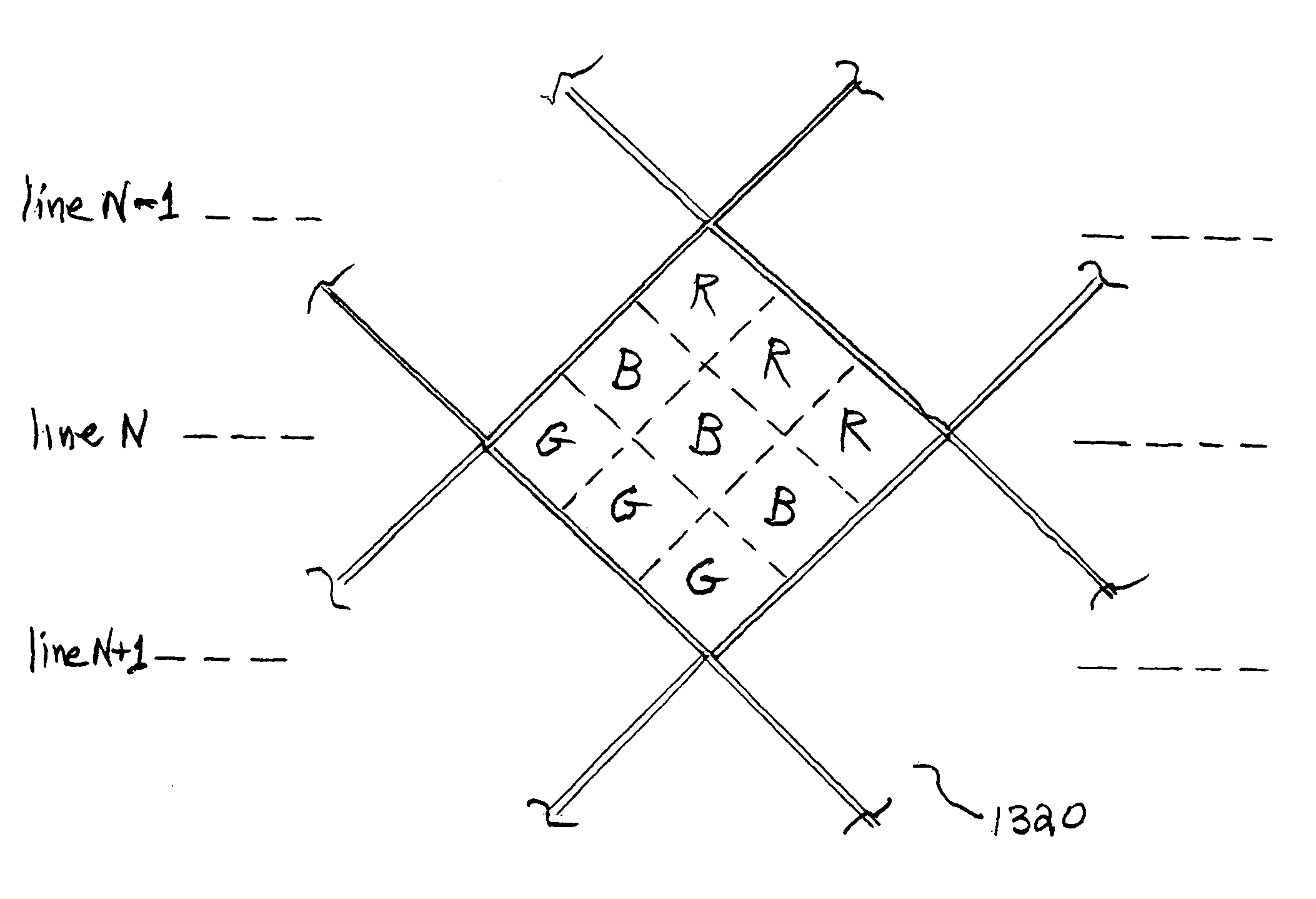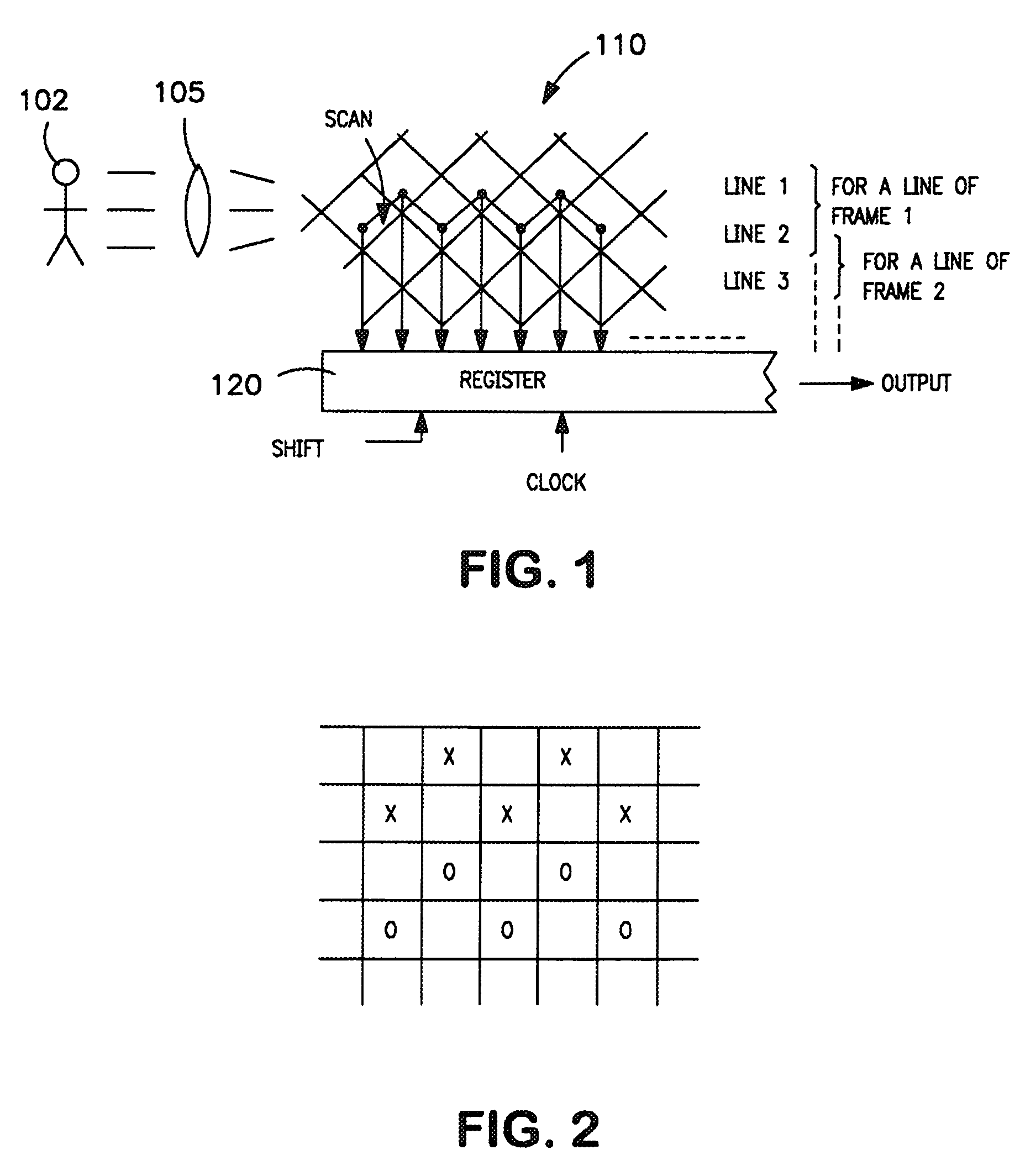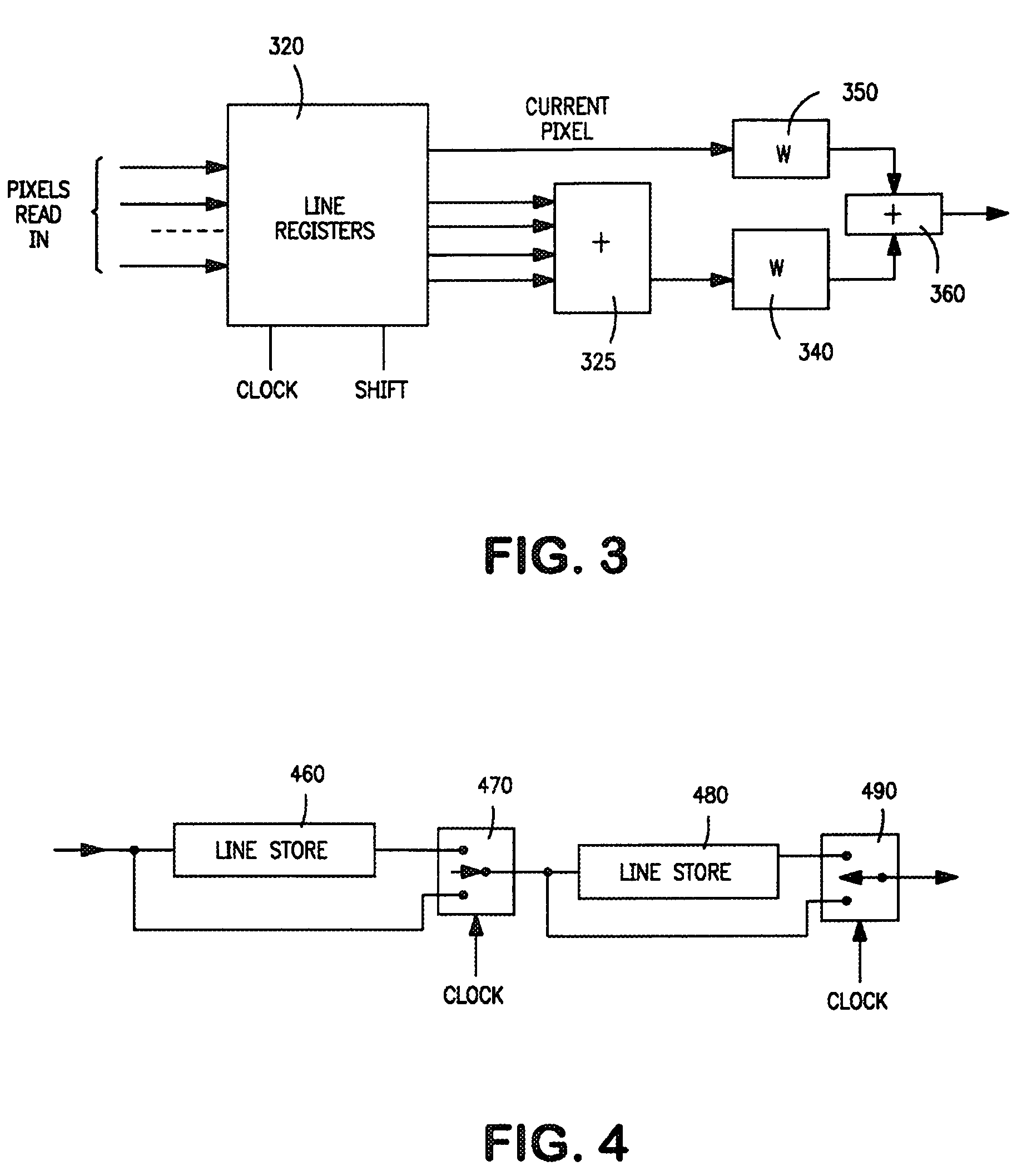Apparatus and method for producing video signals
a technology of video signal and apparatus, applied in the field of video signal production, can solve the problems of 720 line format, reduced vertical resolution, interlaced image suffers from the usual interlace artifacts, etc., and achieves the effect of reducing the number of pixels, reducing the perceived resolution, and reducing the perceived sharpness
- Summary
- Abstract
- Description
- Claims
- Application Information
AI Technical Summary
Benefits of technology
Problems solved by technology
Method used
Image
Examples
Embodiment Construction
[0023]In FIG. 1, an image, which can be a moving image, from a scene 102, is projected by camera lens system 105 on a diagonally oriented solid state image sensor 110, a representative portion of which is shown in FIG. 1. For a diagonally sampled CCD, the pixels look as shown in the Figure. Lines 1, 2 and 3 are identified in the illustration, which shows how line pairs are clocked into the horizontal register 120 for lines of the first frame and lines of the second frame. The output has the two lines dot sequentially in its output. To make it compatible with interlace, two lines are clocked out at a time during one frame (lines 1 and 2, then 3 and 4, and so on). For the next frame, the register system shifts down one line and clocks out the next line pairs (lines 2 and 3, then 4 and 5, and so on).
[0024]If the signal is to be obtained from a progressively scanned camera at 60 FPS, the signals can be derived from a cardinally sampled image as illustrated in FIGS. 2, 3, and 4. First, a...
PUM
 Login to View More
Login to View More Abstract
Description
Claims
Application Information
 Login to View More
Login to View More - R&D
- Intellectual Property
- Life Sciences
- Materials
- Tech Scout
- Unparalleled Data Quality
- Higher Quality Content
- 60% Fewer Hallucinations
Browse by: Latest US Patents, China's latest patents, Technical Efficacy Thesaurus, Application Domain, Technology Topic, Popular Technical Reports.
© 2025 PatSnap. All rights reserved.Legal|Privacy policy|Modern Slavery Act Transparency Statement|Sitemap|About US| Contact US: help@patsnap.com



